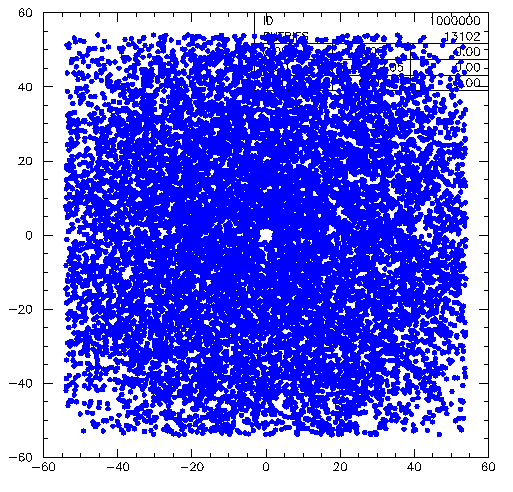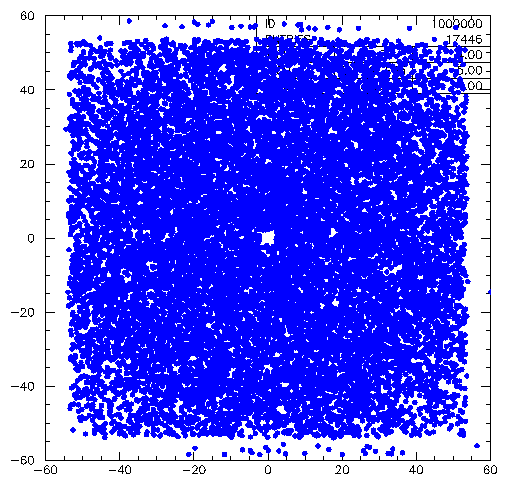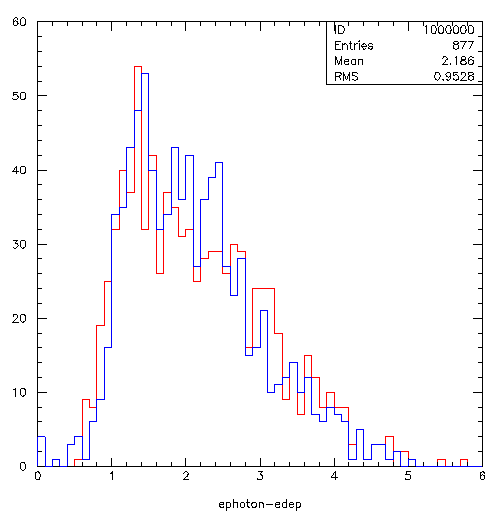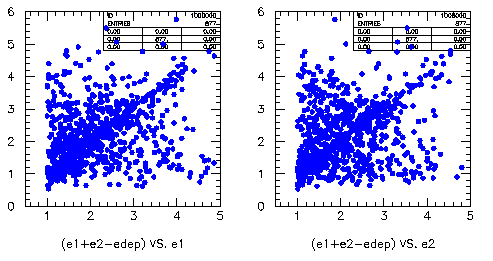PrimEx Electronics Overview
![]()
To ensure that all gammas resulting from pi0s are detected, the analog sum of groups of detectors will be discriminated on. For this purpose, we will use two modules, the UVA120 36-input linear fan-in and the UVA125 which has four 9-input linear fan-ins with dual level discriminators on each. The groups will be made from three or four rows of detectors spanning the width of the calorimeter. These groups will NOT overlap as in the previous plan so the group discriminators must be set with thresholds at half the minimum photon energy we want to trigger on. e.g. if we want to trigger on 1GeV or greater photons, the discriminators should have thresholds of 0.5GeV.
Each detector will contribute to exactly one horizontal strip and
one vertical strip. There will be 7 strips in each direction (x,y)
for a total of 14 strips. Here are pictures showing each strip with
slightly different coloration to indicate the different UVA120 modules.
group1.gif
group2.gif
group3.gif
group4.gif
group5.gif
group6.gif
group7.gif
group_all.gif
The seven X strips will have discriminator outputs which go into an 8 input memory lookup unit (MLU). This unit will be programmed to set any combination of three status bits depending on the inputs. Similarly for the Y strips. The six bits (3 x and 3 y) will then be sent to a second MLU along with some other calibration triggers to create the master trigger for the calorimeter.
The first stage MLUs will output three status bits defined as follows:
e.g. a bit pattern of 0 0 1 1 0 0 0
indicating that the third and fourth strips had fired
would set bits two and three, but not bit one.
a pattern of 0 0 1 1 0 1 0 0
indicating that the third,fourth, and sixth strips had fired
would set all three bits
The second level MLU would then set the trigger bit if:
A simulation
was done to test the efficiencyof this triggering scheme. The results are as follows:
Neutral pions were generated in a GEANT simulation with a distribution
in theta that was forward biased, but was only a very rough approximation
of the primkoff theta dependance. The pions distributed in a bremstrahlung
energy distribution.
Information about the resulting gammas was recorded at the time of the
decay for comparison to reconstructed values at the end of the event.
The acceptance efficiency is determined by the following:
If both photons are projected from the time of decay to hit the calorimeter
and each has an energy greater than 1GeV, then the event is marked as
good at it is assumed we should get valid triggers for those events. The
fraction of these events for which the simulated trigger is true gives
an estimate for the acceptance efficiency.
Here are a couple of plots showing the distribution of hits for events
which "should" have had a good trigger and events that "did" have a
good trigger.

|

|


It is not known right now why it seems the calorimeter occasionally "misses" one of the photons that is headed straight for it. One can imagine, however, that had these been counted by the calorimeter, the trigger simulation would have returned a true.